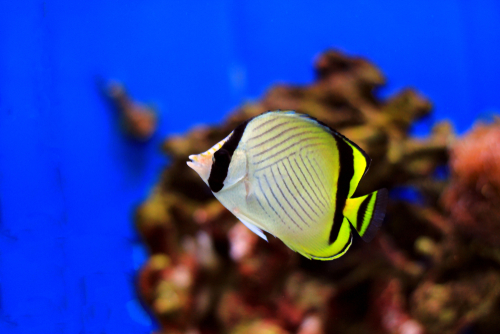Butterfly fish are a type of marine fish that are known for their vibrant colors and unique patterns.
These fish are commonly found in tropical and subtropical waters around the world, and they are a popular choice for aquarium enthusiasts. One of the most common questions people have about is what do butterfly fish eat.
Understanding what do butterfly fish eat is important for their health and well-being. These fish are carnivores, which means they primarily eat other small marine animals.
Some of the most common foods that butterfly fish eat include crustaceans, small fish, and various types of invertebrates. However, the specific diet of a butterfly fish can vary depending on its species and habitat.
Contents
Key Takeaways on What Do Butterfly Fish Eat?
- Butterfly fish are carnivorous and primarily eat small marine animals like crustaceans and invertebrates.
- The specific diet of a butterfly fish can vary depending on its species and habitat.
- Understanding the dietary needs of butterfly fish is important for their health and well-being.
Check out these other feeding tips or your aquarium favorites:
Understanding Butterfly Fish
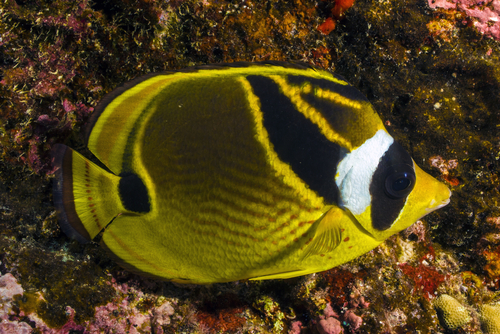
Butterfly fish belong to the Chaetodontidae family, which includes over 120 species of brightly colored tropical marine fish. They are also known as coralfish due to their close association with coral reefs.
Butterfly fish are known for their striking patterns and stripes, which often extend to their gill covers and snout.
One of the most notable features of butterfly fish is their vibrant colors. They come in a range of hues, from bright yellows and oranges to deep blues and purples.
The coloration of butterfly fish is thought to serve a variety of purposes, including camouflage, communication, and mate selection.
Butterfly fish are omnivores, meaning they eat both plant and animal matter. Their diet typically consists of small invertebrates, such as crustaceans and mollusks, as well as algae and other plant material.
Some species of butterfly fish have specialized diets, feeding exclusively on certain types of coral or sponges.
Habitat of Butterfly Fish
Butterfly fish are found in tropical and subtropical waters all around the world. They prefer to live in areas with plenty of coral reefs, lagoons, and seagrass beds. These habitats provide plenty of hiding places and food sources for the fish.
In the Pacific Ocean, butterfly fish are commonly found in the coral reefs of the Great Barrier Reef, as well as in the waters around Hawaii and French Polynesia.
In the Atlantic Ocean, they can be found in the Caribbean Sea and along the coast of Brazil. In the Indian and Pacific Oceans, they are found in the waters around Indonesia and the Philippines.
Butterfly fish are known for their ability to navigate through the crevices of coral reefs, where they can find small invertebrates to eat. They are also known to feed on plankton and algae, which can be found in abundance in coral reefs and seagrass beds.
Life Cycle of Butterfly Fish
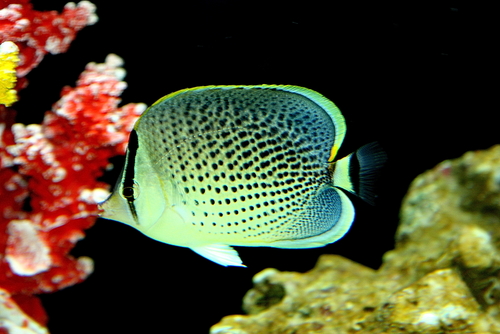
Butterfly fish have a unique life cycle that involves several stages of development. The following paragraphs will provide a brief overview of each stage.
1. Juvenile Stage
Butterfly fish begin their lives as small, transparent larvae that drift in the ocean’s currents. After several weeks, they settle on a reef and transform into juveniles.
Juvenile butterflyfish have a different appearance than adults, with a more rounded body shape and a yellow or white coloration.
2. Adult Stage
As butterfly fish mature, they develop their distinctive appearance. Adult butterfly fish have a flat, disk-shaped body with a long, pointed snout.
They are typically brightly colored, with intricate patterns and markings. Some species of butterfly fish are known for their vibrant blue or yellow hues.
3. Reproduction
Butterfly fish reproduce by laying eggs. Females release thousands of eggs into the water, which are fertilized by males. The eggs hatch into larvae, which drift in the ocean’s currents until they settle on a reef and begin their juvenile stage.
4. Lifespan
The lifespan of butterfly fish varies depending on the species. Some species live for only a few years, while others can live up to 10 years or more in the wild.
Dietary Needs of Butterfly Fish
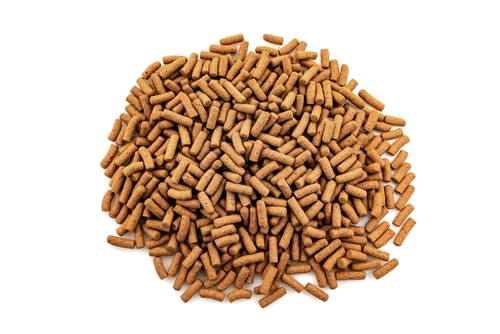
Butterfly fish are known to be omnivorous, which means they eat both plants and animals. Their diet mainly consists of various invertebrates, including crustaceans, worms, shrimp, and mollusks. They also feed on small fish, plankton, and zooplankton.
Butterfly fish are known to nibble on coral and algae, but they do not rely on them as their primary source of food. They may also consume tubeworms and small spiders that are present on the coral reef.
In captivity, butterfly fish are commonly fed with frozen foods, vitamin-enriched brine shrimp, and live foods. They can also be given meaty foods such as mysid shrimp and small pieces of fish.
It is important to note that butterfly fish require a protein-rich diet to maintain their health and vitality. They also need a variety of foods to ensure that they receive all the necessary nutrients.
Butterfly Fish Care Beyond Diet: Ensuring Overall Well-being
While the butterfly fish diet is a crucial aspect of their care, there are other important factors to consider for maintaining their health and happiness in an aquarium setting.

Let’s explore these areas, ensuring we complement the dietary focus with a holistic approach to their care.
- Nurturing with the Right Butterfly Fish Food:
Aquarium Size: Butterfly fish require spacious tanks to thrive. A minimum of 75 gallons is recommended, but larger is better, especially for more active species.
Coral and Rockwork: Since many butterfly fish species are closely associated with coral reefs, including live corals, rocks, and caves can provide a natural and comforting environment for these fish.
- Water Quality and Parameters:
Stable Water Conditions: Maintaining stable water parameters, including temperature, pH, and salinity, is critical for butterfly fish. Regular testing and adjustments help in creating a stable aquatic environment.
Filtration and Cleanliness: Efficient filtration systems are essential to keep the water clean and free from harmful toxins. Regular water changes and tank maintenance are necessary to ensure optimal water quality.
- Social and Behavioral Needs:
Tank Companions: Careful selection of tank mates is important. While butterfly fish are generally peaceful, they can be territorial towards their species. Suitable companions might include non-aggressive fish of similar size.
Avoiding Overcrowding: Overcrowding can lead to stress and health issues in butterfly fish. Ensure there’s enough space for each fish to establish its territory.
- Monitoring Health and Preventing Disease:
Regular Observations: Keep an eye out for any signs of distress or illness, such as changes in swimming patterns, loss of appetite, or visible wounds.
Quarantine New Arrivals: Introducing new fish to the aquarium should be done cautiously. Quarantining new arrivals can prevent the spread of diseases to your established butterfly fish.
- Enrichment and Interaction:
Environment Enrichment: Adding variety to the aquarium, like changing the arrangement of corals and rocks, can provide mental stimulation.
Gentle Interaction: While direct handling should be avoided, regular, calm interaction near the tank can help butterfly fish get accustomed to your presence.
Butterfly Fish in Aquariums
Butterfly fish are a popular choice for aquarium enthusiasts due to their vibrant colors and unique patterns. These fish are relatively easy to care for and can thrive in a variety of tank setups.
However, it is important to note that not all butterfly fish are suitable for aquariums, as some species require specific care and conditions.
When setting up an aquarium for butterfly fish, it is important to provide plenty of hiding spots and live rock for the fish to explore and hide in. The tank should also be large enough to accommodate the fish comfortably, with a minimum size of 50 gallons recommended.
Butterfly fish are known to be aggressive towards other fish, so it is important to choose tank mates carefully. Peaceful fish such as wrasses, gobies, and tangs are good choices, while aggressive fish should be avoided.
In terms of diet, butterfly fish are carnivorous and require a varied diet of meaty foods such as shrimp, krill, and small pieces of fish. It is important to feed them multiple times a day, as they have small stomachs and require frequent feeding.
The ideal temperature for butterfly fish is between 74-80°F, with a pH level of 8.1-8.4. It is important to maintain stable water conditions and perform regular water changes to keep the tank clean and healthy for the fish.
Types of Butterfly Fish
Butterfly fish are a diverse group of marine fish that are known for their vibrant colors and unique patterns.
There are over 100 species of butterfly fish, each with its own unique characteristics and dietary needs. In this section, we will take a closer look at some of the most common types of butterfly fish and what they eat.
Copperband Butterfly Fish

The Copperband Butterfly Fish (Chelmon rostratus) is a popular species of butterfly fish that is known for its striking orange and black stripes.
These fish are found in the Indo-Pacific region and are often found in coral reefs. Copperband Butterfly Fish are omnivores and typically eat a diet of small crustaceans, plankton, and algae.
Raccoon Butterflyfish
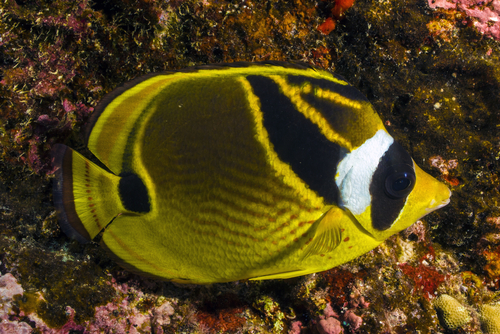
The Raccoon Butterflyfish (Chaetodon lunula) is another popular species of butterfly fish that is known for its distinctive black and white markings.
These fish are found in the Western Atlantic and are often found in coral reefs and rocky areas. Raccoon Butterflyfish are omnivores and typically eat a diet of small invertebrates, algae, and coral polyps.
African Butterflyfish
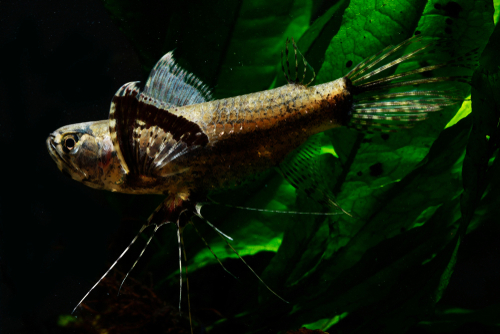
The African Butterflyfish (Pantodon buchholzi) is a unique species of butterfly fish that is known for its ability to jump out of the water to catch insects and other prey.
These fish are found in freshwater habitats in Africa and are often found in slow-moving rivers and streams. African Butterflyfish are carnivorous and typically eat a diet of insects, small fish, and crustaceans.
Chaetodon Mertensii
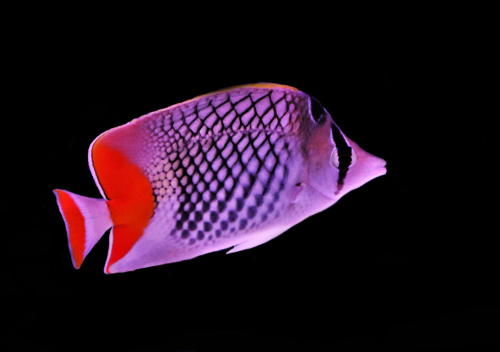
The Chaetodon Mertensii (Copperband Butterflyfish) is a species of butterfly fish that is found in the Indian and Pacific Oceans. These fish are known for their bright yellow color and black stripes.
Chaetodon Mertensii are omnivores and typically eat a diet of small invertebrates, plankton, and algae.
Behavior and Characteristics of Butterfly Fish
Butterfly fish are known for their vibrant colors and unique patterns. They are a peaceful species and can be found in pairs or small groups.
Butterfly fish are known to be territorial and will defend their space from other fish. They are not aggressive towards their tank mates, but they will protect their partner and territory if threatened.
Butterfly fish have excellent eyesight and use it to locate their prey. They primarily feed on small invertebrates, such as crustaceans and worms.
Some species of butterfly fish have a specialized diet, such as the long-nose butterfly fish, which feeds on coral polyps.
Butterfly fish are compatible with many other species of fish, including clownfish, gobies, and parrotfish. However, they may not be suitable for tanks with aggressive predators, as they are a peaceful species.
Butterfly Fish and Pets
Butterfly fish are a popular choice among aquarium enthusiasts due to their vibrant colors and unique patterns. However, before adding a butterfly fish to your aquarium, it is important to understand their dietary needs.
Diet of Butterfly Fish
Thinking about what Butterfly fish eat? are carnivorous and feed on a variety of small invertebrates such as crustaceans, mollusks, and worms. They also consume small fish and plankton.
In captivity, butterfly fish can be fed a diet of frozen or live brine shrimp, mysis shrimp, and krill. It is important to provide a varied diet to ensure that the fish receive all the necessary nutrients.
Compatibility with Other Fish
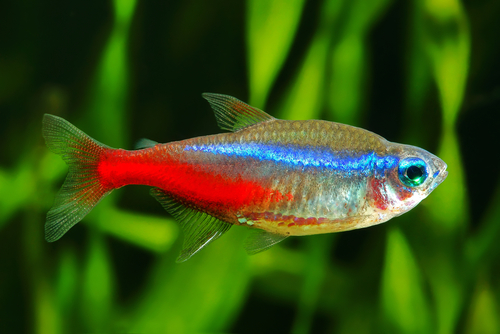
Butterfly fish are generally peaceful and can be kept with other non-aggressive fish. However, they may become territorial towards other butterfly fish and should be kept singly or in pairs.
They should also not be kept with small fish that could be seen as prey.
Tank Requirements
Butterfly fish require a tank with plenty of swimming space and hiding places. A tank size of at least 75 gallons is recommended for a single butterfly fish.
They also require a well-filtered tank with good water quality and a temperature range of 75-80°F.
FAQs: What Do Butterfly Fish Eat?
What is the typical diet of butterfly fish?
Butterfly fish are carnivorous and primarily feed on small invertebrates such as crustaceans, worms, and small mollusks. They also occasionally eat small fish and plankton.
What do butterfly fish eat in an aquarium setting?
Butterfly fish in aquariums thrive on a diet similar to their natural habitat, which includes small crustaceans, invertebrates, and suitable commercial feeds.
How can I ensure my butterfly fish is receiving a balanced diet?
Offering a variety of foods and observing their eating habits can help ensure that your butterfly fish receive a balanced diet that meets their nutritional needs.
How often do butterfly fish need to eat?
Butterfly fish typically feed 2-3 times a day, depending on their size and activity level. In the wild, they may go longer periods without food if prey is scarce.
What are some common prey items for butterfly fish?
Butterfly fish commonly feed on crustaceans such as shrimp and crabs, small mollusks like snails and clams, and small fish such as goby and blennies.
Are there any specific feeding requirements for keeping butterfly fish in captivity?
In captivity, it is important to provide a varied diet that includes live or frozen food such as brine shrimp, krill, and mysis shrimp.
Some species of butterfly fish require a specific diet, so it is important to research their feeding requirements before keeping them in captivity.
What is the relationship between butterfly fish and coral reefs?
Butterfly fish are an important part of the coral reef ecosystem and play a role in controlling populations of small invertebrates. They also help to maintain the health of the reef by removing harmful algae.
How do butterfly fish obtain their food in the wild?
Butterfly fish use their long snouts to probe crevices and cracks in the coral reef, searching for hidden prey. They also swim in open water to catch small fish and plankton.

Ian Sterling, founder of Fishlab.com, began his aquarium journey over 30 years ago, driven by a deep fascination for fish and their diverse personalities. His website, Fishlab.com, is dedicated to making fishkeeping accessible and enjoyable, offering beginner-friendly guidance, expert insights, and a community for aquarists to connect and share experiences.


